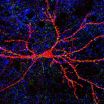New technique enables increasingly accurate PET scan to detect cancer and heart conditions
2014-10-10
(Press-News.org) A novel technique which reduces image degradation caused by respiratory motion during a PET scan was developed in a recent study at the University of Eastern Finland. PET scanning is routinely used to detect cancer and heart conditions. The new technique presented in the PhD thesis of Tuomas Koivumäki, MSc (Tech.), is based on bioimpedance measurement and it allows for image reconstruction at a specific phase of the patient's breathing pattern. This, in turn, makes it possible to reduce image degradation caused by motion.
In the future, the newly developed technique will enable increasingly accurate image acquisition especially during PET scans performed to detect cancers of the chest and upper abdomen, and inflammatory diseases of the heart. PET scanning, or positron emission tomography, is a modern nuclear medicine imaging method, which allows for the detection of cancer and heart conditions.
Thanks to enhanced image quality, PET images provide new and increasingly accurate data, potentially improving diagnosis reliability and treatment response monitoring. High-quality image data makes the treatment more efficient both medically and financially.
The study found that when synchronising images on the basis of bioimpedance, it was possible to discern smaller details. Motion compensation also significantly influenced the parameters measured from the images. Bioimpedance measurement offers a straightforward technique for acquiring the data needed for motion compensation. Furthermore, the technique can be easily integrated into electrocardiogram (ECG) measurement, which is widely used to monitor heart function during the scan.
Bioimpedance helps assess the patient's breathing
In techniques based on bioimpedance measurement, a very weak electrical current is passed through the patient's chest, and changes in the resulting voltage are measured. The voltage has been observed to change according to the patient's breathing and cardiac function. Earlier, bioimpedance measurements have been used to assess for example body composition, fluid accumulations in lungs, and indicators of cardiac function.
The study focused on the feasibility of bioimpedance-based measurement techniques for respiratory and cardiac motion compensation in PET imaging. The study first used computational models and test subjects to determine an optimised bioimpedance measurement configuration for simultaneous measurement of respiratory and cardiac gating signals. The second phase of the study focused on analysing whether bioimpedance techniques can be used to reduce respiration-related degradation of PET images.
Motion degrades PET scan image quality
PET scanning is used for cancer staging and evaluating treatment response, as well as for studying myocardial blood flow and inflammatory diseases of the heart. Typically, a PET scan takes several minutes, which is why movement caused by the patient's breathing inevitably degrades image quality. Degraded image quality caused by respiratory motion has been reported to affect PET scanning performed to detect cancer and heart conditions in particular. At worst, image degradation may lead to a wrong diagnosis and inadequate or unnecessary treatment.
INFORMATION:
The results were originally published in Medical & Biological Engineering & Computing, Physiological Measurement, and Physics in Medicine and Biology.
For further information, please contact: Tuomas Koivumäki, tel. +358447175025, tuomas.koivumaki@kuh.fi
The doctoral dissertation, entitled Bioimpedance Technique in Respiratory- and Dual-gated Positron Emission Tomography Imaging, is available for download at http://urn.fi/URN:ISBN:978-952-61-1581-8
ELSE PRESS RELEASES FROM THIS DATE:
2014-10-10
New Orleans, LA – A special study using data from LSU Health New Orleans School of Public Health's Louisiana Tumor Registry has found that colorectal cancer incidence rates in the Louisiana Acadian parishes are among the highest in the United States. This study appears to be the first to identify a high rate of cancer in a large, regional, US founder population, raising the possibility of a genetic predisposition. Alternatively, an unidentified, robust environmental risk factor may be present. The paper is published online in Clinical and Translational Gastroenterology, ...
2014-10-10
A small, "empty" space teeming with activity: a synapse is a complex structure where the neural (electrical) signal from the presynaptic neuron, as it travels towards its target –a muscle, a gland or another neuron – turns into a chemical signal capable of crossing the synaptic space before becoming electrical again once on the other side. A synapse is a "dynamic" space not only because of the endless work that goes on there, but also for its ability to change its action over time (synaptic plasticity) as a result of either normal physiological processes (e.g., ...
2014-10-10
The sanitation intervention delivered under the terms of the Government of India's Total Sanitation Campaign—the world's largest sanitation initiative—provided almost 25 000 individuals in rural India with access to a latrine. However, it did not reduce exposure to faecal pathogens or decrease the occurrence of diarrhoea, parasitic worm infections, or child malnutrition.
"The programme is effective in building latrines, but not all households participate"*, explains lead author Professor Thomas Clasen from Emory University, Atlanta, USA and the London School ...
2014-10-10
VIDEO:
Dr. Myron M. Levine, Director of the Center for Vaccine Development at the University of Maryland School of Medicine describes the Ebola vaccine testing taking place in Mali, West Africa.
Click here for more information.
Professor Myron M. Levine, MD, Director of the Center for Vaccine Development (CVD) at the University of Maryland School of Medicine (UM SOM), and UM SOM Dean E. Albert Reece MD, PhD, MBA, announced today that the CVD, in conjunction with its sister institution, ...
2014-10-10
LA JOLLA, CA – October 9, 2013 - Scientists at The Scripps Research Institute (TSRI) have created a synthetic molecule that mimics "good" cholesterol and have shown it can reduce plaque buildup in the arteries of animal models. The molecule, taken orally, improved cholesterol in just two weeks.
This research, published in the October issue of Journal of Lipid Research, points scientists toward a new method for treating atherosclerosis, a condition where plaque buildup in the arteries can cause heart attacks and strokes.
"Atherosclerosis is the number one killer ...
2014-10-10
Large numbers of fish will disappear from the tropics by 2050, finds a new University of Britsh Columbia study that examined the impact of climate change on fish stocks. The study identified ocean hotspots for local fish extinction but also found that changing temperatures will drive more fish into the Arctic and Antarctic waters.
Using the same climate change scenarios as the Intergovernmental Panel on Climate Change, researchers projected a large-scale shift of marine fish and invertebrates. In the worst-case scenario, where the Earth's oceans warm by three degrees ...
2014-10-10
Using a recently developed biomarker of aging known as an epigenetic clock, UCLA researchers working closely with a German team of investigators have found for the first time that obesity greatly accelerates aging of the liver. This finding could explain the early onset of many age-related diseases, including liver cancer, in obese subjects
Although it had long been suspected that obesity ages a person faster, it hadn't been possible to prove the theory, said study first author Steve Horvath, a professor of human genetics at the David Geffen School of Medicine at UCLA ...
2014-10-10
The ideal cost per dose for a new meningitis vaccine ranges from £3 up to a possible £22 only if several vaccine favourable factors all coincide, according to research which has analysed how to maximise the reduction in cases while making a new vaccination programme cost-effective.
Bexsero is the first vaccine to broadly protect against meningitis B disease, but research now suggests the Government would need to negotiate a considerable reduction in the £75 list price in order to provide the same value for money as other programmes in the NHS.
In March ...
2014-10-10
Proteins regulating cell division determine tumour growth. Ongoing clinical trials are currently studying inhibitors for two of these proteins, Cdk4 and Cdk6, targeting several types of cancer, such as breast cancer, lung cancer and leukaemia. The Cell Division and Cancer Group at the Spanish National Cancer Research Centre (CNIO), led by Marcos Malumbres, has discovered the molecular mechanism behind the interaction of these proteins. Researchers also demonstrated in mice that the simultaneous inhibition of both molecules is more effective than the individual inhibition. ...
2014-10-10
Focusing on large, star-forming galaxies, researchers at the Johns Hopkins University were able to measure radiation leaks in an effort to better understand how the universe evolved as the first stars were formed.
Sanchayeeta Borthakur, an assistant research scientist in the Department of Physics and Astronomy in the university's Krieger School of Arts and Sciences, reports in a paper published online Oct. 9 in the journal Science that an indicator used for studying star-forming galaxies that leak radiation is an effective measurement tool for other scientists to use. ...
LAST 30 PRESS RELEASES:
[Press-News.org] New technique enables increasingly accurate PET scan to detect cancer and heart conditions




